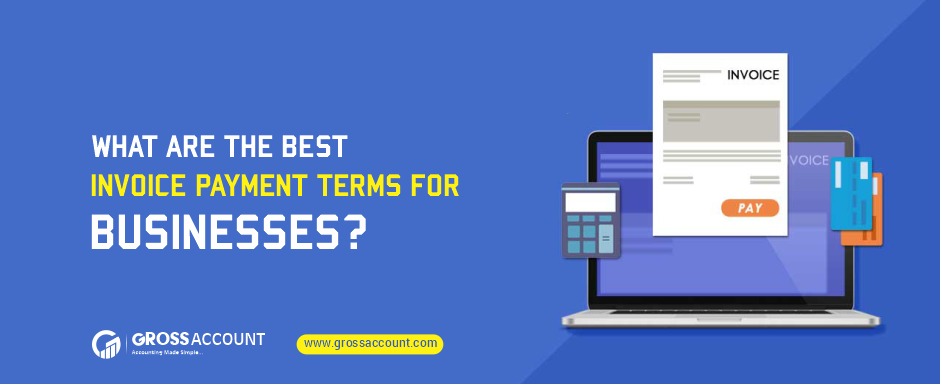Businesses or organizations might supply resources to their clients in exchange for credits to maintain their client relationships. As a result, they must be familiar with the invoice or invoice payment terms.
Maintaining a positive cash flow is important for every business. And if they deliver the materials in credits, the organization’s cash flow may become unstable. That is why they rely on invoices to keep track of transactions.
Companies can notify their clients about payment terms and conditions by using invoices. Without the usage of a bill, an organization would be unaware of payment methods, payment deadlines, late payment penalties, etc.
Clients are aware of the main terms of the invoice bill, and an invoice can provide companies with confidence that they will be paid on time. As a result, their businesses have not experienced negative cash flow.
Businesses used invoicing software to create invoices. This software allows organizations to create invoices quickly and accurately.
What are the Common invoice payment terms?
Invoices are used by businesses daily. They can do this by implementing software that allows them to easily create invoices and maintain a positive cash flow.
The following are some of the most common invoice payment terms. Companies typically use these terms in their credit deals.
1. PIA – Payment In Advance
Payment in advance is a term used by businesses to request full payment before providing materials.
These payment terms provide businesses with payment assurance and allow them to relax about receiving payment. However, PIA terms can cause businesses to lose new customers. On the other hand, they can keep their cash flow.
2. 50% Upfront
If a company deals in credit, it is worried about collecting money. If there are any start-ups, they will have to deal in credits while taking on risks. Companies that use PIA terms in their invoices are unable to build relationships with their consumers. That’s why they’re asking for a 50% down payment upfront.
Companies ask clients to pay half of the total cost before obtaining the materials, and the rest after receiving the materials, under these terms. This term is really helpful in maintaining their clients’ trust as well as their cash flow in their company.
3. COD – Cash On Delivery
Organizations can deliver materials to collect payment in cash from clients as soon as the materials are delivered. This strategy attracts a large number of new customers and gains their interest in purchasing the products.
During the supply of materials, the organization has the right to take payment from clients in cash, via online service payment methods, via e-check, etc, if these terms are followed. If a customer is unable to pay their invoices, businesses have the right to cancel the order immediately.
This strategy allows a business to keep a positive cash flow while still receiving payments on time. They have a lower chance of debts and maintaining consumer relationships.
4. Due upon receipts
The sort of advance payment is due upon receipts. However, after making an advance payment, the clients receive an invoice – a legal document as a guarantee that they will receive the products on time.
Following due open upon receipts organization must send the invoice copy via mail or messages. Clients then proceed to finish the payment of the materials after receiving the invoices. The company must supply the materials to the clients after receiving payment.
Organizations and customers can benefit from this method of billing terms. Because the organization receives payments and maintains cash flow as a result of the due upon receipts policy. On the other hand, Clients have legal documents that indicate that if they do not receive materials on time, they have the right to take legal action against the owner or organization.
5. Net 7, 10, 30, 60, 90
The term “net payment terms” is the most commonly used by businesses. Due to these payment conditions, businesses can issue credit invoices to their customers with simplicity.
When businesses use these payment terms, they give their consumers a certain amount of time to complete the payment after receiving invoices or materials. If a company uses Net 10 terms, for example, clients must pay within 10 days of receiving the invoices. Normally, businesses utilize Net 30 terms, but for mitigating risk, businesses also choose Net 10 terms.
6. EOM
This term is simple; businesses receive money at the end of the month after providing the invoice by using these terms. Customers are also required to pay at the end of the month (EOM).
7. Line of Credit pay
These payment terms are most commonly used by large companies. However, small and medium-sized enterprises do not use this term because of the risk it involves, as well as the fact that it reduces their cash flow.
If businesses follow the credit payment conditions, their customers will pay on a monthly and quarterly basis. In short, they finish their payment in small amounts. These payment terms are permitted by businesses to maintain relationships with their older and bigger clients. However, they may be able to reduce their cash flow as a result of this, or they may face the risk of uncompleted payments.
Which are the best invoice terms for businesses?
As a result, selecting the optimal invoicing terms for organizations is critical. Here are some of the best and most dependable invoice terms available, which can help you keep your cash flow positive while obtaining immediate payment.
Politely word your invoice payment terms
Payment terms are the terms under which businesses and their customers agree on payments, payment methods (COD, Online Payment, Advances), and other details. These agreements guarantee that the companies will be paid on time and that the clients will receive their materials on time.
The payment terms are specified in polite words on the invoices. Clients are informed about the payment system as a result, and businesses can maintain a positive cash flow.
Cashflow consideration
Although you must consider client expectations when establishing invoice payment terms for your business, your major concern should be your cash flow requirements. The ideal invoice payment terms are those that supply enough cash to keep your business open while also taking into account the needs of your clients.
While adopting “Due Upon Receipt” payment conditions on your invoice can help you be paid faster and have more consistent cash flow, it can also be inconvenient for your customers. It may also be off-putting to them, making you appear tough to work with, leading to even slower payment or a lesser possibility of repeat business.
Also Read: TOP 10 STRATEGIES TO IMPROVE CASH FLOW MANAGEMENT OF YOUR BUSINESS
Set Deadline for payment
Companies also include a payment deadline in their invoices. Clients must pay within the specified time using the methods mentioned. If the companies do not get payment from their customers, they have the legal authority to take legal action. As a result, with the help of invoices, businesses can maintain their account.
Early payment discount
Companies can create strategies to collect payment in advance, such as an early payment discount. Organizations receive payment on a timely basis as a result of these strategies. Following these approaches, the company reduces risk and customers receive satisfaction while receiving a discount.
Late fees & Interest
Late fees and interest are two of the most popular invoicing terms used by businesses. If businesses follow these regulations, they have the right to receive more money than the agreed-upon total if customers are not able to pay on time.
In terms of late fees and interest on the credited amount, an additional payment is received. But before that, send a friendly reminder to the clients to complete the payment to continue the relationship with the clients’ organization. Still, they have not completed the payment, the companies will apply late fees.
Conclusion
Companies must keep to the invoice terms to manage cash flow after providing the materials in credits. These payment terms also help customers in understanding the company’s agreements and payment methods.
Every organization in the digital world utilizes technology to make their jobs easier. Companies use invoicing software to create invoices as well. The software allows the company to easily prepare invoices and notify clients about payment terms while sending invoices.
Contact Us today and receive the best solution for managing your transaction.






